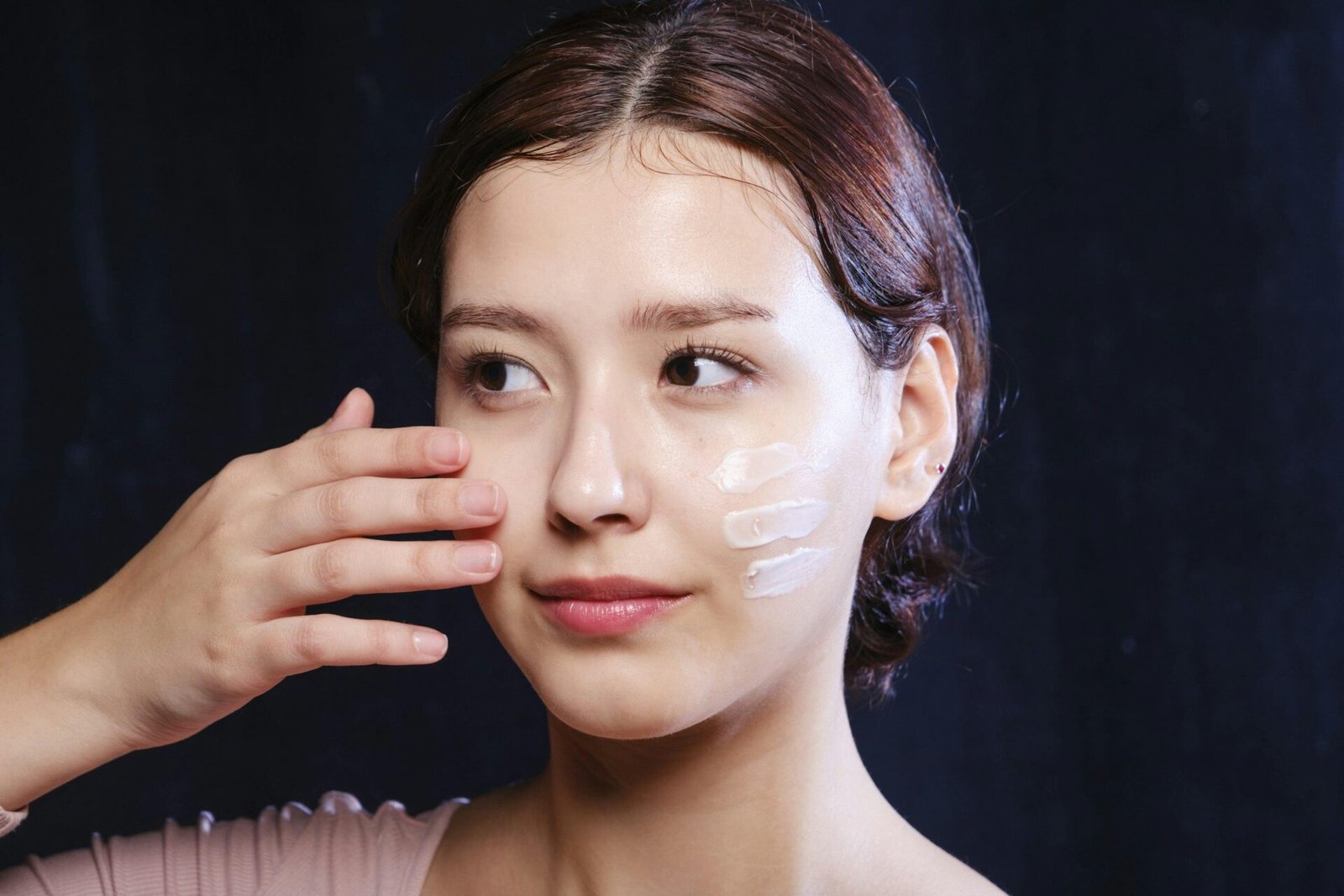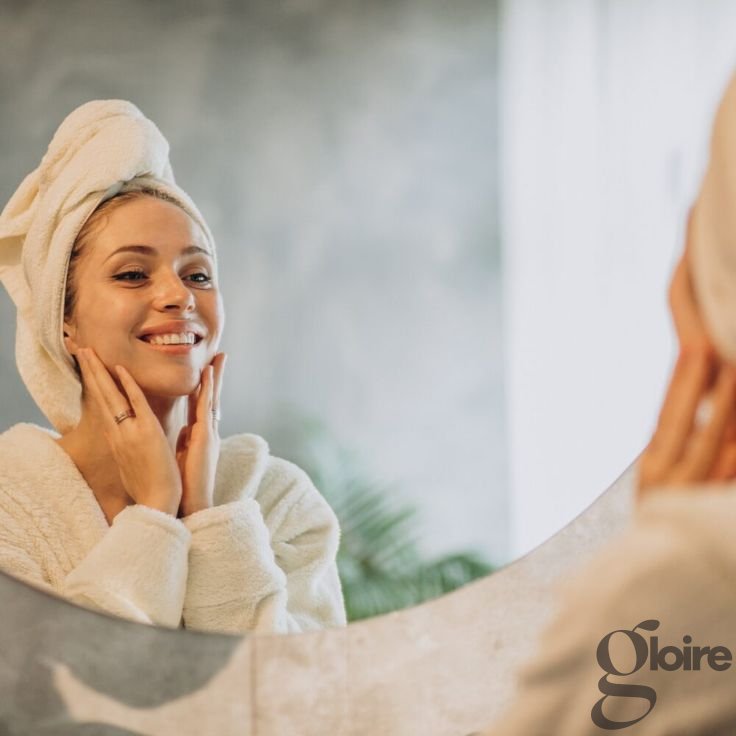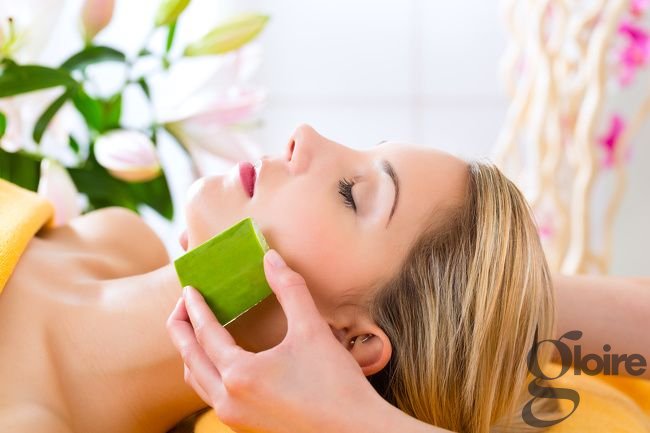Why Is a Skincare Routine Important?
A consistent skincare routine helps to:
- Protect the skin from environmental damage.
- Address specific skin concerns like acne, hyperpigmentation, or dryness.
- Maintain a youthful and glowing complexion.
- Strengthen the skin barrier, ensuring it remains resilient.
Now, let’s delve into the specific steps for a skincare routine and how to follow them.
1. Cleansing: The First Step in Your Skincare Routine Order
Cleansing is the foundation of any skincare routine. It removes dirt, oil, and makeup, preventing clogged pores and breakouts.
How to Cleanse Correctly
- Use lukewarm water to wet your face.
- Apply a cleanser suitable for your skin type. For oily skin, a gel-based cleanser works well, while cream-based cleansers are better for dry skin.
- Massage the cleanser gently for 30-60 seconds and rinse thoroughly.
Pro Tips
- Double cleanse if you wear makeup or sunscreen. Start with an oil-based cleanser, followed by a water-based one.
- Avoid harsh cleansers that strip your skin of natural oils.
Related Resource
Learn more about maintaining a clean and healthy skin barrier: How to Repair a Damaged Skin Barrier
2. Exfoliation: When and How to Incorporate It
Exfoliation removes dead skin cells, promoting a smoother texture and better absorption of products.
Types of Exfoliants
- Physical Exfoliants: Scrubs with small granules. Use sparingly to avoid micro-tears.
- Chemical Exfoliants: AHAs like glycolic acid and BHAs like salicylic acid are gentler and effective.
Best Practices for Exfoliation
- Use 1-2 times a week, depending on your skin’s tolerance.
- Always follow with moisturizer to restore hydration.
- Avoid over-exfoliating, which can damage the skin barrier.
Example
A case study showed that incorporating a BHA exfoliant twice a week significantly reduced acne in 87% of participants.
3. Toning: Preparing the Skin for Hydration
Toners help balance the skin’s pH and remove any leftover residue after cleansing.
How to Use a Toner
- Apply with a cotton pad or directly with your hands.
- Pat gently onto the skin.
Benefits of Using a Toner
- Hydrates and refreshes the skin.
- Prepares the skin for subsequent products.
Recommended Reading
Discover more about the benefits of toners: Toner Benefits: Understanding Its Purpose in Skincare
4. Applying Serums: Targeting Skin Concerns
Serums are concentrated treatments that address specific skin issues like fine lines, dark spots, or dullness.
Popular Ingredients
- Vitamin C: Brightens skin and protects against free radicals.
- Hyaluronic Acid: Provides intense hydration.
- Retinol: Reduces signs of aging.
Pro Tips for Serum Application
- Use a pea-sized amount.
- Apply to slightly damp skin for better absorption.
- Allow the serum to fully absorb before moving to the next step.
Additional Insight
Curious about the order of serums and moisturizers? Check this guide: Serum Before or After Moisturizer
5. Moisturizing: Locking in Hydration
A moisturizer seals in hydration and protects the skin barrier.
Choosing the Right Moisturizer
- Dry Skin: Opt for rich, cream-based moisturizers.
- Oily Skin: Lightweight, gel-based moisturizers are ideal.
- Combination Skin: Use different moisturizers for different areas of the face if necessary.
How to Apply Moisturizer
- Use upward, gentle strokes.
- Don’t forget the neck area.
Fun Fact
Moisturizing daily reduces the risk of dryness-related wrinkles by up to 20%.
6. Sun Protection: The Non-Negotiable Step
Sunscreen is the final step in your morning skincare routine. It protects against harmful UV rays that cause premature aging and skin cancer.
How to Use Sunscreen
- Apply generously to all exposed areas.
- Use SPF 30 or higher.
- Reapply every 2 hours if outdoors.
Key Statistic
According to dermatologists, consistent sunscreen use can reduce the risk of melanoma by 50%.
Learn More
For oily skin sunscreen tips: The Right Skincare Routine for Oily Skin
Additional Skincare Tips and Best Practices
Patch Testing New Products
Always patch test a new product to avoid allergic reactions. Apply a small amount to your inner arm and wait 24 hours.
Layering Products Correctly
Follow this order: Cleanser > Toner > Serum > Moisturizer > Sunscreen (morning) or Treatment (night).
Hydration and Diet
Drink at least 8 glasses of water daily and eat a balanced diet rich in antioxidants.
Final Thoughts
By following these steps for a skincare routine, adhering to the correct skincare routine order, and incorporating best practices, you can achieve healthy, glowing skin. Customize your routine based on your skin type and needs, and always prioritize consistency. For more expert advice and tips, explore Gloire’s Blog.








